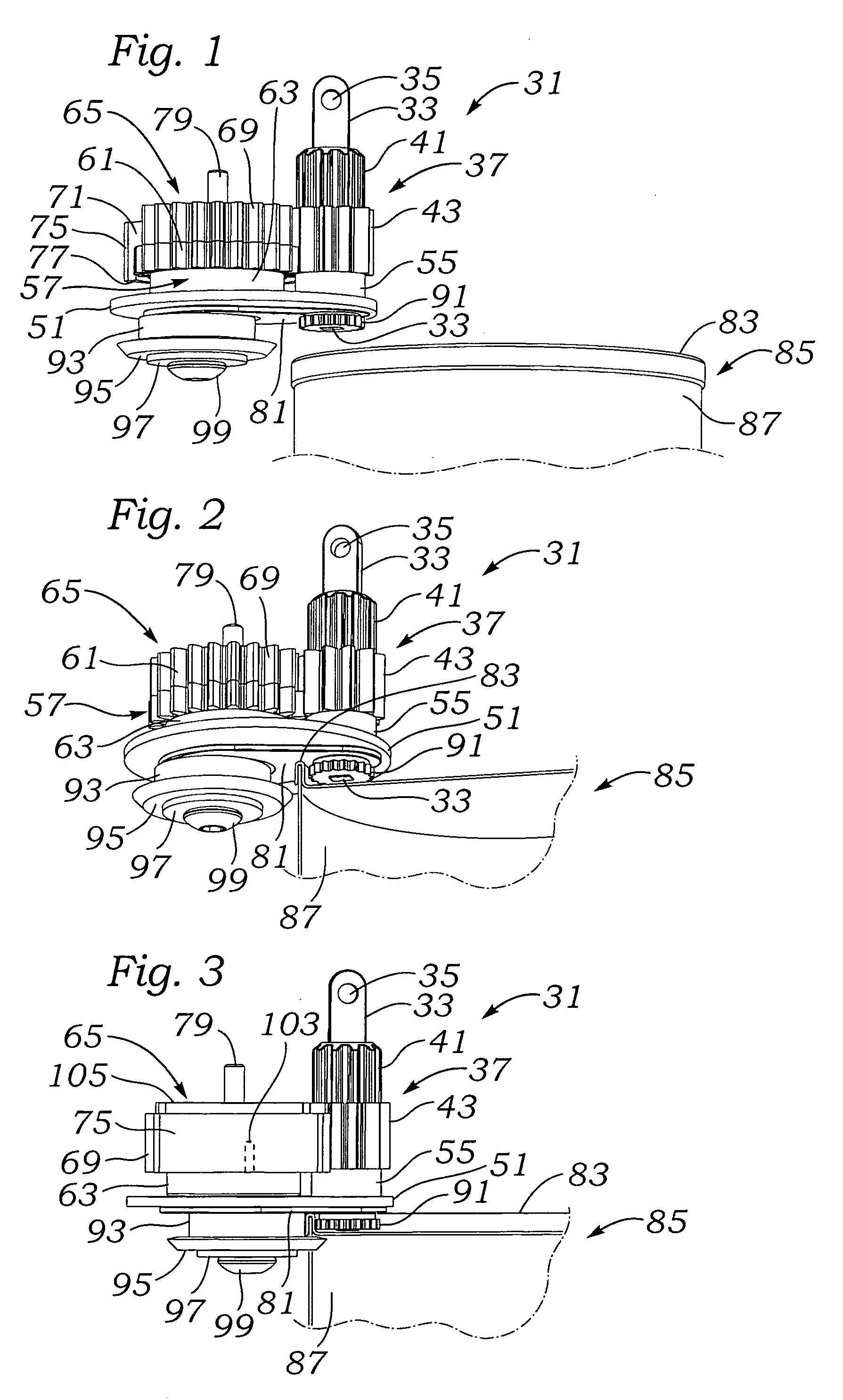Rotary can opener
- Summary
- Abstract
- Description
- Claims
- Application Information
AI Technical Summary
Benefits of technology
Problems solved by technology
Method used
Image
Examples
Embodiment Construction
[0033]Referring to FIG. 1, a spatial perspective of the mechanism of the invention hereinafter referred to as rotary can opener mechanism 31 is seen as an operating assembly and without the surrounding housing details. Beginning at the top of the assembly, a drive shaft 33 is seen as having an engagement aperture 35. Drive shaft 33, for strength may preferably be made of metal. Drive shaft 33 is shown extending through an axial drive gear set 37 having an upper engagement gear 41 and a lower drive gear 43.
[0034]A number of structures that are preferably integral to a support housing are illustrated in a position isolated from the remainder of the support housing. A housing section 51 represents the base floor of a lower housing section (not shown) that would provide support for all of the connected components seen at the upper left of
[0035]FIG. 1. At the right side of the housing section 51 a drive gear boss 55 is shown for rotatably supporting the drive gear 43 at a proper elevatio...
PUM
 Login to View More
Login to View More Abstract
Description
Claims
Application Information
 Login to View More
Login to View More - R&D
- Intellectual Property
- Life Sciences
- Materials
- Tech Scout
- Unparalleled Data Quality
- Higher Quality Content
- 60% Fewer Hallucinations
Browse by: Latest US Patents, China's latest patents, Technical Efficacy Thesaurus, Application Domain, Technology Topic, Popular Technical Reports.
© 2025 PatSnap. All rights reserved.Legal|Privacy policy|Modern Slavery Act Transparency Statement|Sitemap|About US| Contact US: help@patsnap.com



